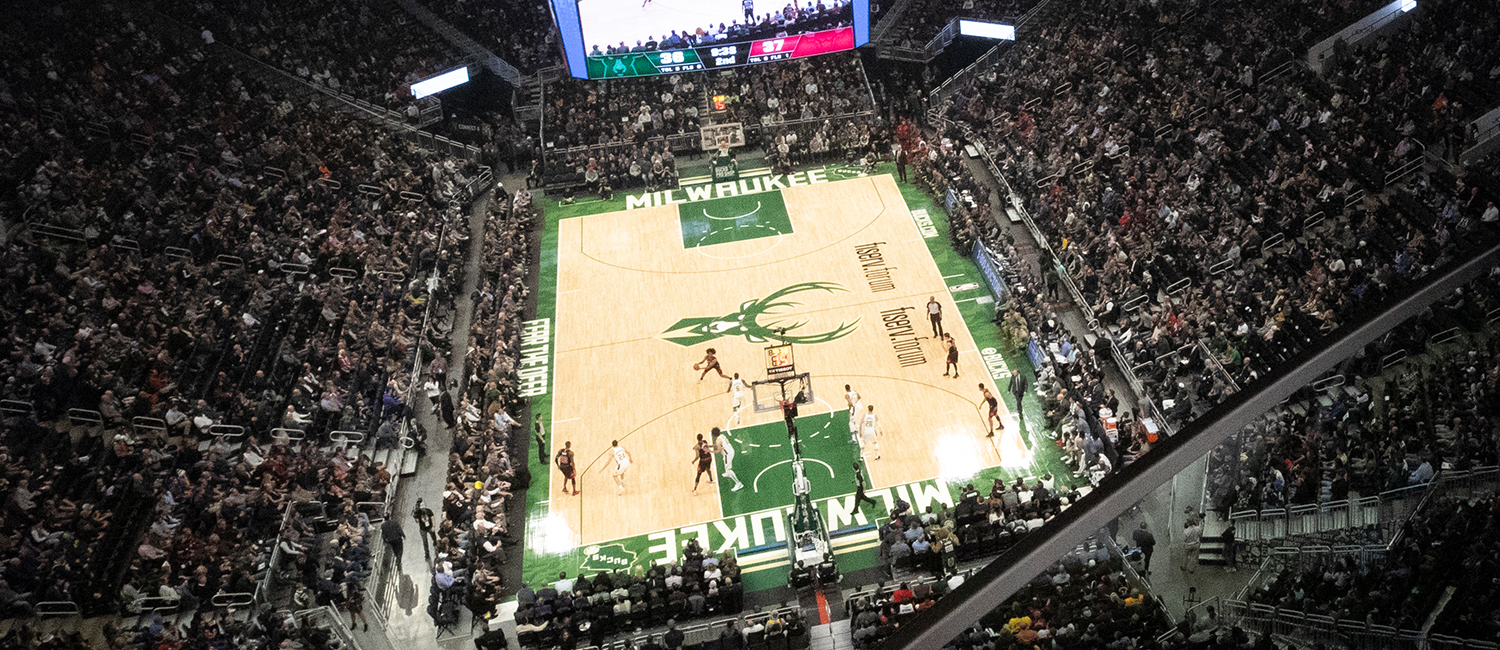
New insight on NBA home-court advantage
If you’re a team in the National Basketball Association, there’s no place like home. Historically, home teams have won about 60 percent of their games. Although the significance of NBA home-court advantage has fluctuated from season to season and has gradually declined through the years, recent seasons have still seen home teams winning nearly six out of every 10 games.
But what determines a team’s home advantage, and why does it change with time? It’s a question that’s been the subject of many studies, including a new one by UWM mathematic and atmospheric science doctoral student Austin Harris, a longtime NBA fan who applied data science to find the answer.
Harris collected season performance statistics for all NBA teams across more than 30 seasons, starting with 1983-84 and ending with the 2017-18 campaign. He also obtained data for potential influences from previous studies, including variables like stadium attendance and team market size. Harris then examined that information using a data science method called an artificial neural network (ANN).
“Neural networks operate in a way that is similar to the human brain, with certain data turned ‘on’ or ‘off,’ like a neuron firing,” says Harris, who works under Paul Roebber, distinguished professor of mathematical sciences.
The key difference between an ANN and similar regression techniques is that an ANN can pick up on the nuanced, nonlinear connections in the dataset. ANNs are most beneficial when relationships in the data are complex, such as the factors that go into NBA teams winning more often at home.

Harris began diagnosing a team’s home-court advantage using team performance statistics only. Then, after he applied data from possible influences, the ANN identified the only thing associated with larger advantages: Teams playing at home made more free throws and can gain an edge by making more 2-point shots.
Those findings seem to run against the grain of the league’s recent trend, which has seen successful teams win by attempting and making more 3-pointers. But Harris says the increased emphasis on 3-point shooting partly explains the gradual decline in NBA home-court advantage over time.
Harris suspects the research results may lend credence to a long-held belief that referees are unconsciously biased toward calling a game slightly in favor of the home team. Fouls are more likely to be called on 2-point shots and dunk attempts, which would also lead to more free-throw attempts. But Harris also notes that the research neither tested for that notion nor found any specific evidence to support it.
There’s one other factor that Harris didn’t test for but that he’s pretty confident in. “It helps,” he says, “to have a player like Milwaukee’s Giannis Antetokounmpo on your team.”